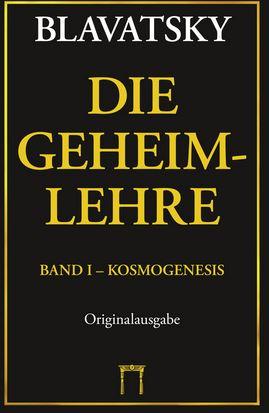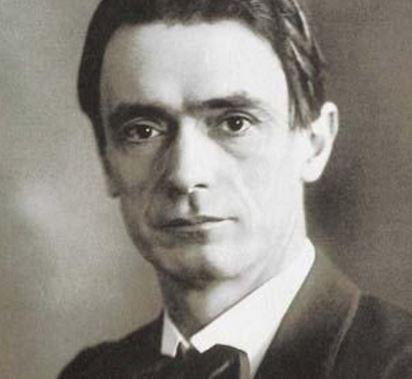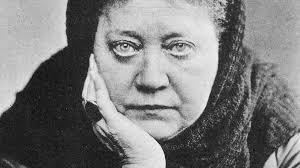Uncover the Secrets of Blavatsky's Secret Doctrine
Helena Petrovna Blavatsky's "The Secret Doctrine" is a foundational text in the realm of esoteric teachings, offering profound insights into the mysteries of existence. This influential work has captivated spiritual seekers and scholars alike, providing a complex and multifaceted exploration of the universe and humanity's place within it.

Blavatsky's magnum opus is a synthesis of various spiritual traditions, philosophies, and sciences, aiming to reveal the hidden truths of nature and the cosmos. As we delve into the depths of "The Secret Doctrine," we uncover a rich tapestry of ideas that continue to inspire and challenge our understanding of the world.
Key Takeaways
- Understanding the core principles of "The Secret Doctrine"
- Exploring Helena Petrovna Blavatsky's role in esoteric teachings
- Discovering the significance of the text in modern spirituality
- Uncovering the historical context of the doctrine's creation
- Analyzing the impact of "The Secret Doctrine" on contemporary thought
The Enigmatic Helena Petrovna Blavatsky
Helena Petrovna Blavatsky, a mystifying figure in the realm of spiritual philosophy, left an indelible mark on modern theosophy. Her life, marked by extensive travels and profound spiritual experiences, laid the groundwork for her seminal work, "The Secret Doctrine."
Early Life and Spiritual Awakening
Born into a Russian noble family, Helena Petrovna Blavatsky exhibited a keen interest in the spiritual and mystical from an early age. Her journey was characterized by a series of extraordinary events and encounters that shaped her spiritual philosophy.
- Experiences with mysticism and the occult
- Influence of Eastern spiritual traditions
- Development of her unique theosophical teachings
Journey to Becoming an Occult Pioneer
Blavatsky's travels took her to various parts of the world, including India and Tibet, where she delved deep into esoteric knowledge. Her experiences and insights eventually led to the establishment of the Theosophical Society, a platform that would disseminate her teachings on theosophy to a wider audience.
Key aspects of her journey include:
- Extensive travels in search of spiritual knowledge
- Study and practice of various occult traditions
- Founding of the Theosophical Society
Through her work and teachings, Helena Petrovna Blavatsky continues to influence contemporary spiritual and philosophical discourse, making her one of the most significant figures in the history of modern spirituality.
The Secret Doctrine of Blavatsky: An Overview
Helena Petrovna Blavatsky's The Secret Doctrine is a treasure trove of esoteric knowledge, revealing the intricacies of the universe. This magnum opus is a foundational text in the realm of metaphysical principles and esoteric teachings.
The complexity of The Secret Doctrine lies in its attempt to unify various aspects of spiritual and scientific knowledge. Blavatsky's work is not just a philosophical treatise but a comprehensive guide to understanding the cosmos and humanity's place within it.
The Structure and Purpose of the Magnum Opus
The Secret Doctrine is structured into two main volumes: "Cosmogenesis" and "Anthropogenesis." The former deals with the origin and evolution of the universe, while the latter focuses on the development of humanity. The purpose of this magnum opus is to provide a deeper understanding of the mysteries of existence, drawing from various religious and scientific traditions.
The Three Fundamental Propositions
Blavatsky outlines three fundamental propositions in The Secret Doctrine, which form the basis of her teachings.
The Boundless Immutable Principle
The first proposition is the concept of the Boundless Immutable Principle, which represents the infinite, unchanging reality that underlies all existence.
The Law of Periodicity
The second proposition is the Law of Periodicity, which governs the cycles of activity and rest throughout the universe, influencing the evolution and dissolution of cosmic phenomena.
The Fundamental Identity of All Souls
The third proposition asserts the Fundamental Identity of All Souls with the Universal Oversoul, emphasizing the interconnectedness of all beings.
| Proposition | Description |
|---|---|
| The Boundless Immutable Principle | Infinite, unchanging reality underlying all existence |
| The Law of Periodicity | Cycles of activity and rest governing cosmic phenomena |
| The Fundamental Identity of All Souls | Interconnectedness of all beings with the Universal Oversoul |
Cosmogenesis: The Birth of Universes
Cosmogenesis, as described in The Secret Doctrine, is a complex and multifaceted concept that explores the origins of the cosmos. Blavatsky's esoteric teachings on this subject provide a profound understanding of the universe's birth and evolution.
https://www.youtube.com/watch?v=xxlNdOy3IxI
The process of cosmogenesis is intricately linked to the idea of the seven cosmic planes, which represent different levels of existence and consciousness. These planes are fundamental to understanding the structure and evolution of the universe.
The Seven Cosmic Planes
The seven cosmic planes are a crucial aspect of Blavatsky's cosmogenesis. They are:
- The plane of Adi, representing the highest, most spiritual level.
- The plane of Anupadaka, associated with the monadic essence.
- The plane of Atma, linked to the universal spirit.
- The plane of Buddhi, representing the spiritual soul.
- The plane of Manas, associated with the higher mind.
- The plane of the astral light, related to the emotional and psychic realms.
- The plane of gross matter, the physical world we experience.
The Cycles of Creation and Dissolution
Blavatsky's teachings also emphasize the cycles of creation and dissolution, or manvantara and pralaya. These cycles reflect the eternal rhythm of the universe, where periods of activity are followed by periods of rest.
The understanding of these cycles is crucial for grasping the metaphysical principles underlying the cosmos. It highlights the dynamic and ever-changing nature of the universe, governed by esoteric laws and patterns.
By exploring cosmogenesis through the lens of The Secret Doctrine, we gain insights into the occult knowledge that underpins Blavatsky's philosophy, offering a deeper understanding of the universe and our place within it.
Anthropogenesis: The Evolution of Humanity
In the esoteric teachings of Theosophy, anthropogenesis represents a pivotal concept that explores the evolution of humanity through spiritual and physical dimensions. This complex process is deeply intertwined with the spiritual philosophy and mystical insights presented in The Secret Doctrine by Helena Blavatsky.
The concept of anthropogenesis is not merely about the physical evolution of humans but encompasses a broader, more intricate journey involving various root races and lost continents. It provides a comprehensive understanding of humanity's development, tracing back to ancient civilizations and mystical lands.
The Seven Root Races
Blavatsky's work outlines the evolution of humanity through seven root races, each representing a distinct stage in human development. These root races are:
- The First Root Race: Characterized by a state of spiritual purity and simplicity.
- The Second Root Race: Marked the beginning of human physical form.
- The Third Root Race: Associated with the continent of Lemuria, where significant spiritual and physical developments occurred.
- The Fourth Root Race: Flourished on the continent of Atlantis, known for its advanced civilization.
- The Fifth Root Race: The current race, representing the Aryan civilization.
- The Sixth and Seventh Root Races: Future races that will evolve with advanced spiritual and physical attributes.
The Lost Continents of Lemuria and Atlantis
The lost continents of Lemuria and Atlantis play crucial roles in the narrative of anthropogenesis. Lemuria is associated with the Third Root Race, where early humans underwent significant evolutionary changes. Atlantis, linked with the Fourth Root Race, is described as a highly advanced civilization that eventually succumbed to its own downfall due to moral and spiritual decay.
These lost continents are not just geographical locations but symbolize different stages of human evolution and spiritual development. They are integral to understanding the cyclical nature of human history and the esoteric teachings of Theosophy.
The Stanzas of Dzyan: Ancient Wisdom Unveiled
Helena Petrovna Blavatsky's "The Secret Doctrine" introduces readers to the Stanzas of Dzyan, a mysterious and ancient wisdom text that continues to captivate those interested in occult knowledge. The Stanzas are foundational to understanding the esoteric teachings that Blavatsky expounded upon, offering a glimpse into the mysteries of the cosmos and humanity's evolution.
Origins and Authenticity Debates
The origins of the Stanzas of Dzyan are shrouded in mystery, sparking debates among scholars and enthusiasts alike. Blavatsky claimed that the Stanzas were derived from an ancient text preserved in secretive Tibetan monasteries. This assertion has led to intense scrutiny and speculation regarding the text's authenticity and the accuracy of Blavatsky's translations.
Decoding the Symbolic Language
The Stanzas of Dzyan are written in a symbolic language, requiring readers to decipher their meaning beyond the literal interpretation. This symbolic narrative is characteristic of esoteric teachings, where the true significance is often veiled in allegory and metaphor.
The Book of Dzyan's Structure
The structure of the Book of Dzyan is complex, comprising various stanzas that outline the evolution of the universe and humanity. Understanding its composition is crucial for grasping the broader occult knowledge that Blavatsky aimed to convey.
Translation Challenges and Interpretations
Translating the Stanzas of Dzyan poses significant challenges due to their arcane language and the cultural context in which they were written. Various interpretations have emerged, reflecting the diverse perspectives within the Theosophical Society and beyond.
Esoteric Teachings and Universal Symbolism
At the heart of 'The Secret Doctrine' lies a complex system of universal symbolism that conveys deep metaphysical principles. Blavatsky masterfully wove together various esoteric teachings to create a comprehensive guide to understanding the mysteries of existence. This synthesis of spiritual and philosophical insights offers a profound framework for exploring the nature of reality and humanity's place within it.

The Language of Sacred Geometry
The use of sacred geometry in 'The Secret Doctrine' is a pivotal aspect of Blavatsky's esoteric teachings. Geometric shapes and patterns are employed to symbolize the harmony and unity underlying the universe's structure.
The Significance of the Circle, Triangle, and Square
The circle, triangle, and square are fundamental shapes in sacred geometry, each carrying distinct symbolic meanings. The circle represents eternity and unity, having no beginning or end. The triangle signifies the trinity of divine aspects, embodying the principles of creation, preservation, and destruction. The square, with its four sides, is often associated with the material world and its four elements.
Numerical Correspondences in The Secret Doctrine
Blavatsky also delved into the significance of numbers in her esoteric teachings, drawing upon various mystical traditions. Numbers are seen as holding the keys to understanding the universe's underlying order and the interconnectedness of all things. For instance, the number seven is recurrently associated with completeness and spiritual perfection.
Deciphering Mythological Parallels
Blavatsky drew parallels between various mythological narratives and the esoteric truths they convey. By examining these myths through the lens of 'The Secret Doctrine,' readers can gain insights into the universal themes and symbolic languages that underlie diverse cultural traditions. This comparative approach highlights the shared mystical insights across different civilizations, pointing to a common esoteric heritage.
As we explore the esoteric teachings and universal symbolism in 'The Secret Doctrine,' we uncover a rich tapestry of metaphysical principles and mystical insights that continue to inspire and guide spiritual seekers today.
The Occult Sciences in The Secret Doctrine
In The Secret Doctrine, Helena Blavatsky presents a comprehensive exploration of occult sciences, including the intricate relationships between astrology and cosmic correspondences.
Astrology and Cosmic Correspondences
Blavatsky's work emphasizes the significance of astrology as a means to understand the cosmic influences on human affairs. She elaborates on how celestial bodies and their configurations correspond to various aspects of human life and the natural world.
"The stars are the physical bodies, and the planets are the vital organs of the Universe." -
This perspective highlights the interconnectedness of the macrocosm and the microcosm, a central theme in theosophical teachings.
| Cosmic Plane | Astrological Correspondence | Human Aspect |
|---|---|---|
| Physical Plane | Saturn | Physical Body |
| Astral Plane | Moon | Emotional Body |
| Mental Plane | Mercury | Mental Faculty |
Alchemy and Spiritual Transformation
Alchemy, another key occult science discussed in The Secret Doctrine, is viewed not merely as a physical process of transmutation but as a spiritual journey of transformation. Blavatsky illustrates how alchemical principles can be applied to achieve spiritual enlightenment and self-realization.
Spiritual alchemy involves the transmutation of base metals into gold, symbolizing the transformation of the human soul into a state of spiritual purity and perfection.
The process of alchemy, both material and spiritual, is deeply rooted in the theosophical understanding of the universe, where the macrocosm and microcosm are intertwined.
Theosophy and Its Relationship to World Religions
Blavatsky's Theosophy is characterized by its eclectic approach, drawing on both Eastern and Western religious traditions to form a comprehensive understanding of spirituality. This synthesis is reflective of her belief in the universal truths that underlie various religious cultures.
Eastern Philosophical Influences
Theosophy is heavily influenced by Eastern philosophical thought, particularly from Hinduism and Buddhism. These influences are evident in the concepts and principles that Blavatsky incorporated into her doctrine.
Hindu Concepts of Brahman and Maya
The Hindu concept of Brahman, or the ultimate reality, is central to Theosophical teachings. Additionally, the idea of Maya, or illusion, is used to explain the nature of the material world and its relationship to the divine.
Buddhist Principles of Karma and Reincarnation
Theosophy also adopts Buddhist principles such as Karma and Reincarnation. These concepts are integral to understanding the cycle of birth, death, and rebirth, and the moral causality that governs this cycle.
Western Esoteric Traditions
In addition to Eastern influences, Theosophy draws on Western esoteric traditions, including Hermeticism and alchemy. These traditions contribute to the rich tapestry of Theosophical thought, providing insights into the mysteries of nature and the human condition.
By integrating these diverse religious and philosophical elements, Blavatsky's Theosophy presents a complex and nuanced spiritual philosophy that continues to attract those seeking a deeper understanding of the mysteries of existence.
Scientific Prophecies and Modern Validation
Blavatsky's magnum opus, 'The Secret Doctrine,' is not only a spiritual guide but also a repository of metaphysical principles that anticipated several modern scientific breakthroughs. This section explores how the esoteric teachings in 'The Secret Doctrine' align with contemporary scientific discoveries, particularly in the realms of atomic theory and evolutionary biology.

Atomic Theory Predictions
In 'The Secret Doctrine,' Helena Petrovna Blavatsky discusses concepts that are now recognized as precursors to modern atomic theory. She describes the universe as being composed of fundamental, indivisible particles, a notion that was revolutionary for its time. These ideas are rooted in occult knowledge that Blavatsky accessed through her esoteric studies.
The predictions made by Blavatsky regarding the structure of matter have been surprisingly corroborated by subsequent scientific discoveries. Modern physics has confirmed that the universe is indeed composed of fundamental particles, validating some of the metaphysical principles outlined in 'The Secret Doctrine.'
Evolutionary Concepts Beyond Darwin
Blavatsky's work also ventured beyond the evolutionary theories of her contemporaries, including Charles Darwin. She proposed a more complex and multifaceted view of evolution, incorporating spiritual and cosmic dimensions. This broader perspective on evolution is now seen as complementary to modern understandings of biological and cosmic evolution.
The evolutionary concepts presented in 'The Secret Doctrine' reflect Blavatsky's deep understanding of metaphysical principles and their application to the natural world. These ideas continue to inspire contemporary discussions on the intersection of spirituality and science.
The Secret Doctrine's Impact on Modern Spirituality
As a foundational text of Theosophy, The Secret Doctrine has shaped the spiritual landscape of the modern world. Its influence can be seen in various aspects of contemporary spirituality, from New Age movements to ongoing Theosophical organizations.
New Age Movements and Blavatsky's Legacy
The New Age movement, which gained momentum in the latter half of the 20th century, owes a significant debt to Blavatsky's work. The Secret Doctrine's exploration of esoteric teachings, cosmic evolution, and the interconnectedness of all things resonated with many seeking a deeper understanding of spirituality and the universe.
Blavatsky's legacy extends beyond the Theosophical Society she co-founded. Her ideas have influenced a wide range of spiritual and esoteric traditions, contributing to a broader cultural shift towards more inclusive and diverse spiritual practices.
Contemporary Theosophical Organizations
Today, various organizations continue the work of the original Theosophical Society, promoting Blavatsky's teachings and furthering her vision of a universal brotherhood of humanity. These organizations engage in a range of activities, including:
- Publishing and disseminating Theosophical literature
- Organizing conferences and workshops on spiritual and esoteric topics
- Supporting community service and humanitarian projects
The continued presence of Theosophical organizations ensures that Blavatsky's ideas remain relevant and accessible to new generations of spiritual seekers.
| Organization | Focus | Activities |
|---|---|---|
| Theosophical Society | Promoting Blavatsky's teachings | Conferences, publications, community service |
| Blavatsky Lodge | Study and discussion of Theosophical texts | Regular meetings, online forums |
| Theosophical Publishing House | Disseminating Theosophical literature | Book publishing, online resources |
Criticisms and Controversies
Despite its influence, 'The Secret Doctrine' has faced numerous criticisms, ranging from accusations of plagiarism to debates over its esoteric teachings. Critics and supporters alike have scrutinized Blavatsky's work, leading to a complex landscape of opinions and interpretations.
Academic Skepticism and Plagiarism Claims
One of the primary criticisms of 'The Secret Doctrine' revolves around its sources and the allegations of plagiarism. Some scholars have questioned the authenticity of the Stanzas of Dzyan, suggesting that Blavatsky may have fabricated or extensively borrowed from existing texts without proper attribution.
A detailed examination of these claims reveals a complex picture. While Blavatsky did draw upon various esoteric traditions, the extent to which she plagiarized or innovated remains a topic of debate.
| Criticism | Description | Counterargument |
|---|---|---|
| Plagiarism | Accusations of copying from other esoteric texts without attribution. | Blavatsky synthesized various traditions, creating a new esoteric framework. |
| Authenticity of Sources | Questions over the validity of the Stanzas of Dzyan. | Blavatsky claimed the Stanzas were part of an ancient tradition, supporting her teachings. |
Racial Theories and Misinterpretations
Another controversy surrounding 'The Secret Doctrine' involves its discussion of racial theories and the concept of root races. Some critics have interpreted Blavatsky's writings as promoting racial superiority or inferiority, leading to accusations of racism.
However, a closer reading suggests that Blavatsky's work was often misunderstood or taken out of context. Her teachings on the evolution of humanity were meant to convey spiritual and philosophical truths rather than promote racial discrimination.
In conclusion, the criticisms and controversies surrounding 'The Secret Doctrine' highlight the complex and often contentious nature of Blavatsky's work. By examining these debates, readers can gain a deeper understanding of the challenges and interpretations associated with this influential esoteric text.
Conclusion: The Enduring Wisdom of The Secret Doctrine
The Secret Doctrine of Blavatsky remains a foundational text in spiritual philosophy, offering profound metaphysical principles and mystical insights that continue to captivate audiences worldwide. Through its exploration of cosmogenesis, anthropogenesis, and the Stanzas of Dzyan, Blavatsky's magnum opus provides a comprehensive understanding of the universe and humanity's place within it.
Blavatsky's work has had a lasting impact on modern spirituality, influencing various esoteric traditions and contemporary thought. The principles outlined in The Secret Doctrine continue to resonate with those seeking a deeper understanding of the mysteries of existence, from the cycles of creation and dissolution to the evolution of humanity through the seven root races.
As a testament to its enduring relevance, The Secret Doctrine's themes and ideas continue to be studied and debated by scholars and spiritual seekers alike. Its exploration of universal symbolism, sacred geometry, and the interconnectedness of all things offers a rich tapestry of mystical insights that remain pertinent in today's world.
FAQ
What is The Secret Doctrine by Helena Petrovna Blavatsky?
The Secret Doctrine is a foundational text of Theosophy, presenting esoteric teachings on the mysteries of the universe, the nature of the divine, and the evolution of humanity, drawing on various spiritual traditions and philosophical concepts.
What are the three fundamental propositions of The Secret Doctrine?
The three fundamental propositions are: the Boundless Immutable Principle, the Law of Periodicity, and the Fundamental Identity of All Souls, which together form the core of Blavatsky's metaphysical principles and offer insights into the nature of reality and the universe.
What is the significance of the Stanzas of Dzyan in The Secret Doctrine?
The Stanzas of Dzyan are an ancient text that serves as the foundation for The Secret Doctrine, providing a symbolic and mystical framework for understanding the origins and evolution of the universe, as well as the nature of humanity, and are central to Blavatsky's esoteric teachings.
How does The Secret Doctrine relate to modern spirituality and Theosophy?
The Secret Doctrine has had a profound influence on modern spirituality, particularly within Theosophical movements, by introducing Eastern philosophical concepts, such as karma and reincarnation, and promoting a holistic understanding of the universe and human evolution, shaping the development of New Age and esoteric thought.
What criticisms and controversies surround The Secret Doctrine?
The Secret Doctrine has faced criticisms and controversies, including accusations of plagiarism, academic skepticism regarding its claims of ancient wisdom, and debates over its racial theories and interpretations, which have impacted its reception and legacy.
How does The Secret Doctrine address the concept of cosmogenesis?
The Secret Doctrine explores cosmogenesis through the lens of the seven cosmic planes and the cycles of creation and dissolution, offering a complex and multifaceted understanding of the universe's origins and the processes that shape its evolution.
What is the role of sacred geometry in The Secret Doctrine?
Sacred geometry plays a significant role in The Secret Doctrine, with Blavatsky using geometric shapes and numerical correspondences to convey esoteric truths about the universe and the interconnectedness of all things, providing a symbolic language for understanding metaphysical principles.
How does The Secret Doctrine relate to the concept of anthropogenesis?
The Secret Doctrine discusses anthropogenesis, or the evolution of humanity, through the concept of the seven root races and the lost continents of Lemuria and Atlantis, presenting a complex narrative of human origins and development that diverges from conventional scientific theories.
Links:






